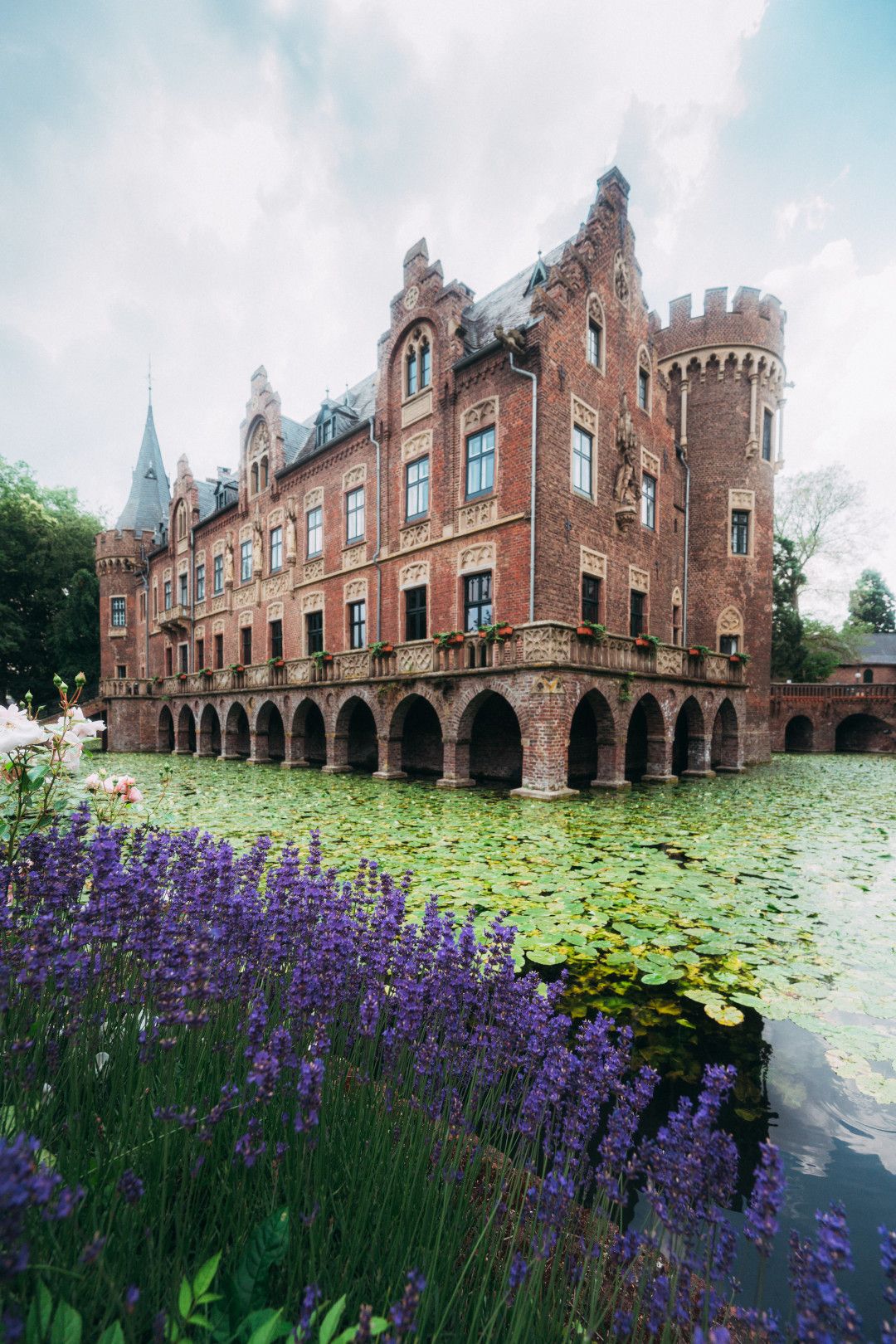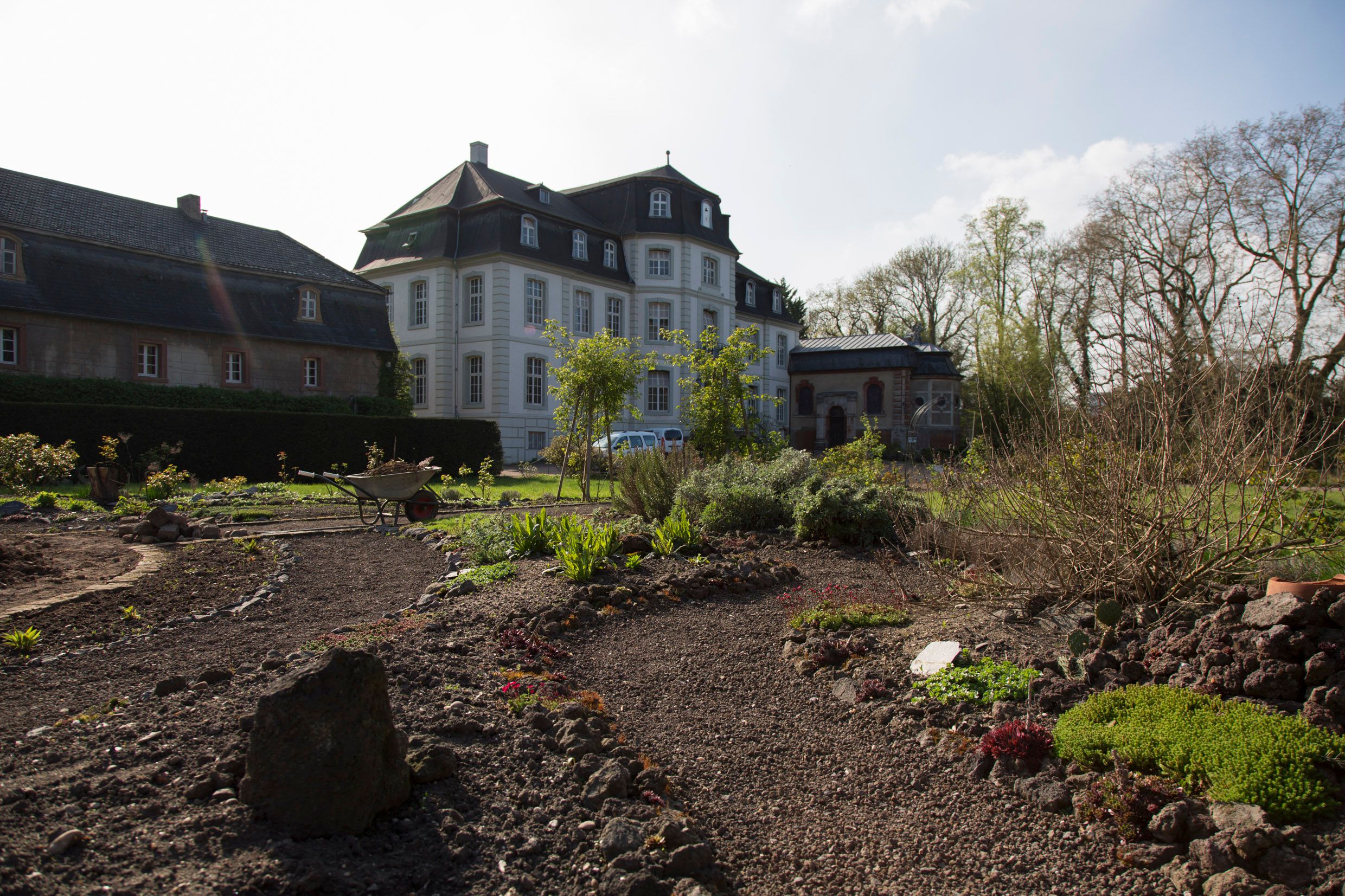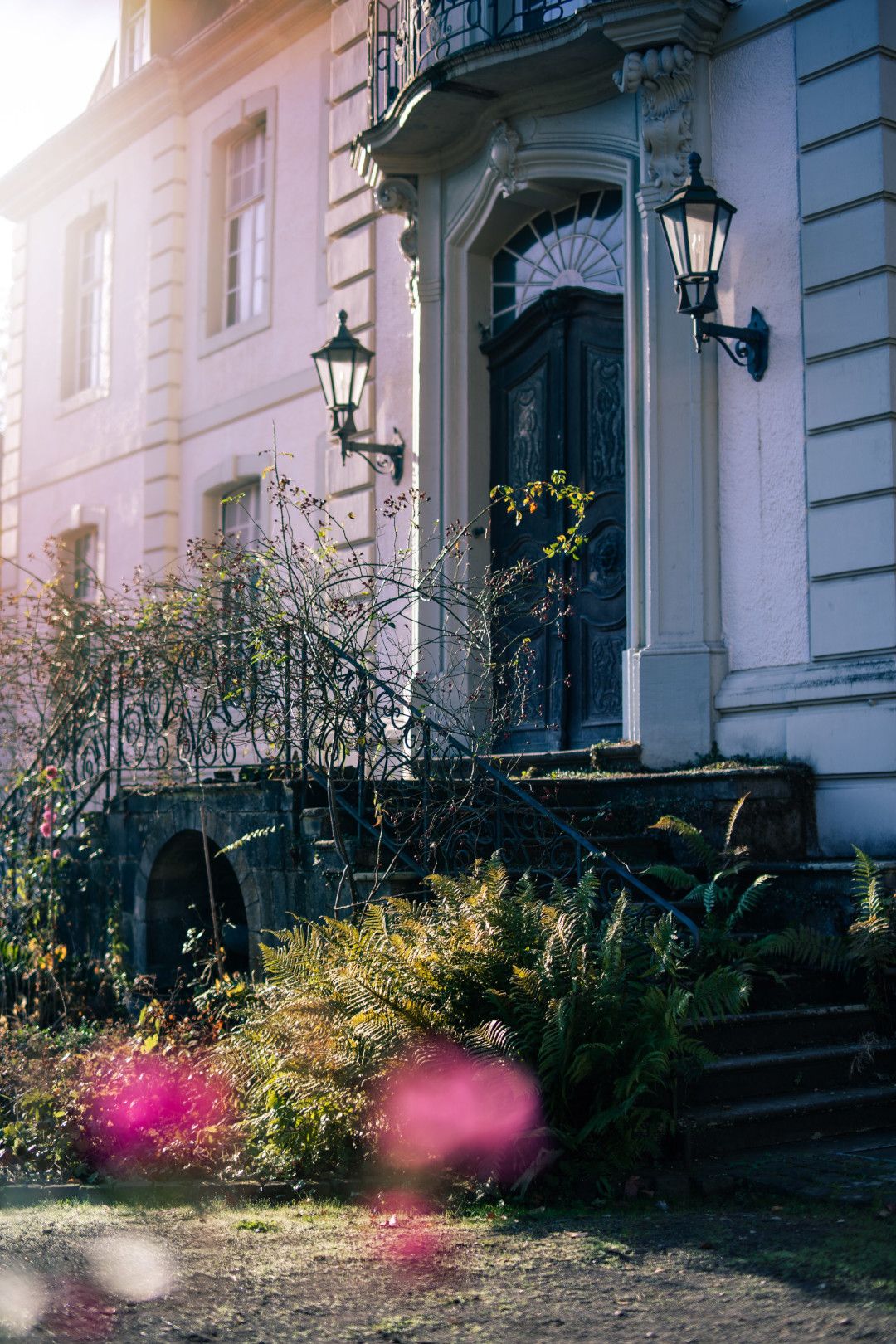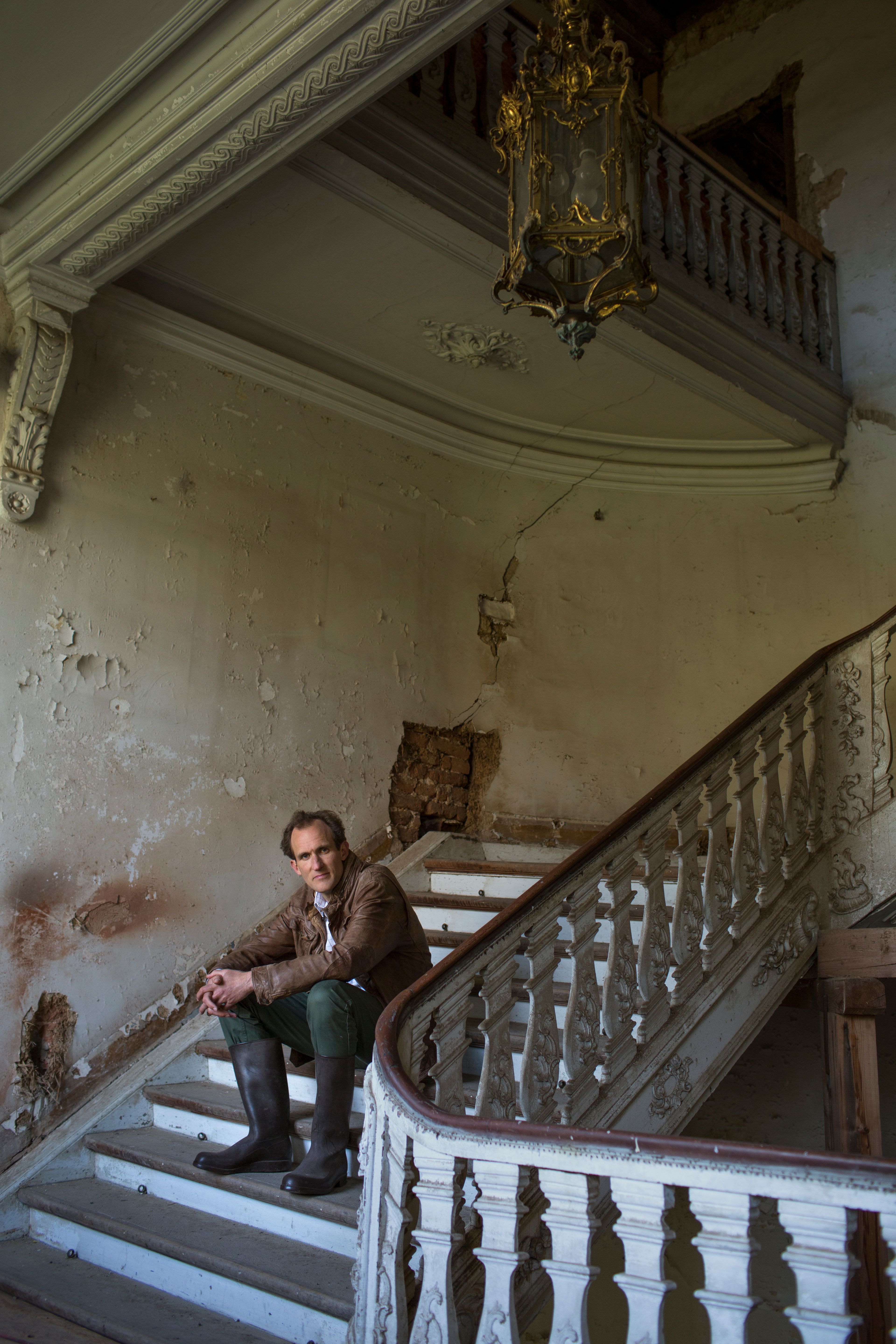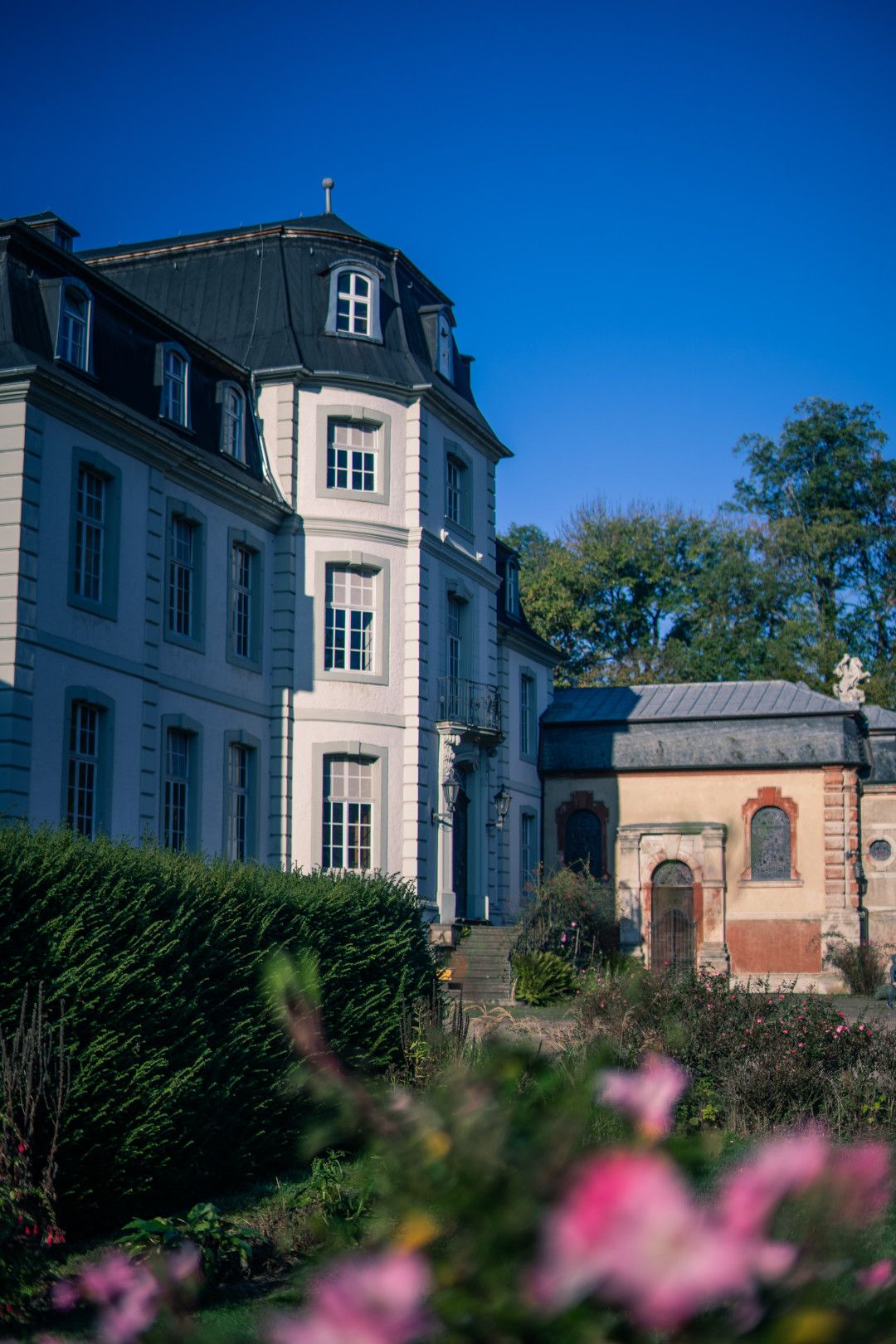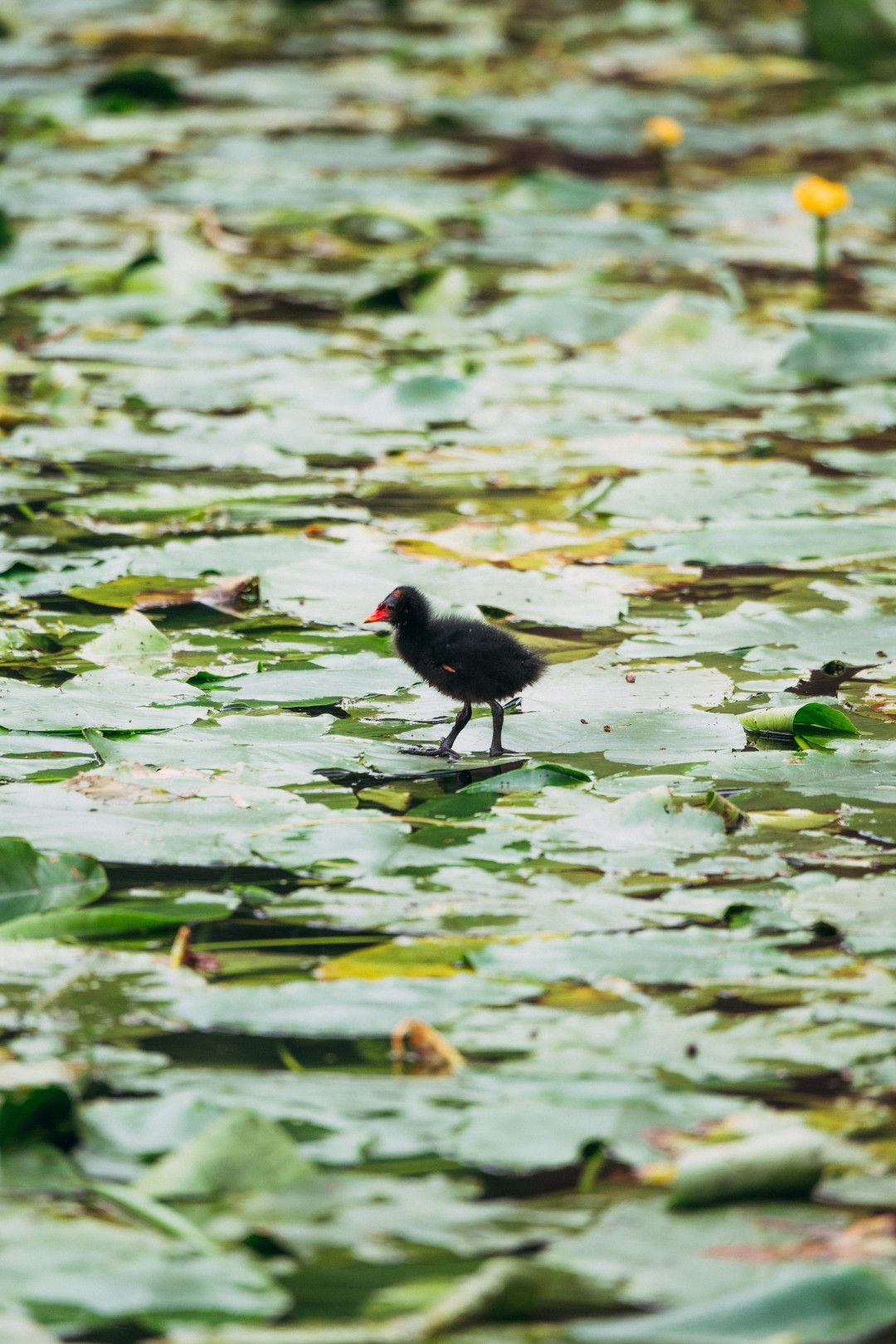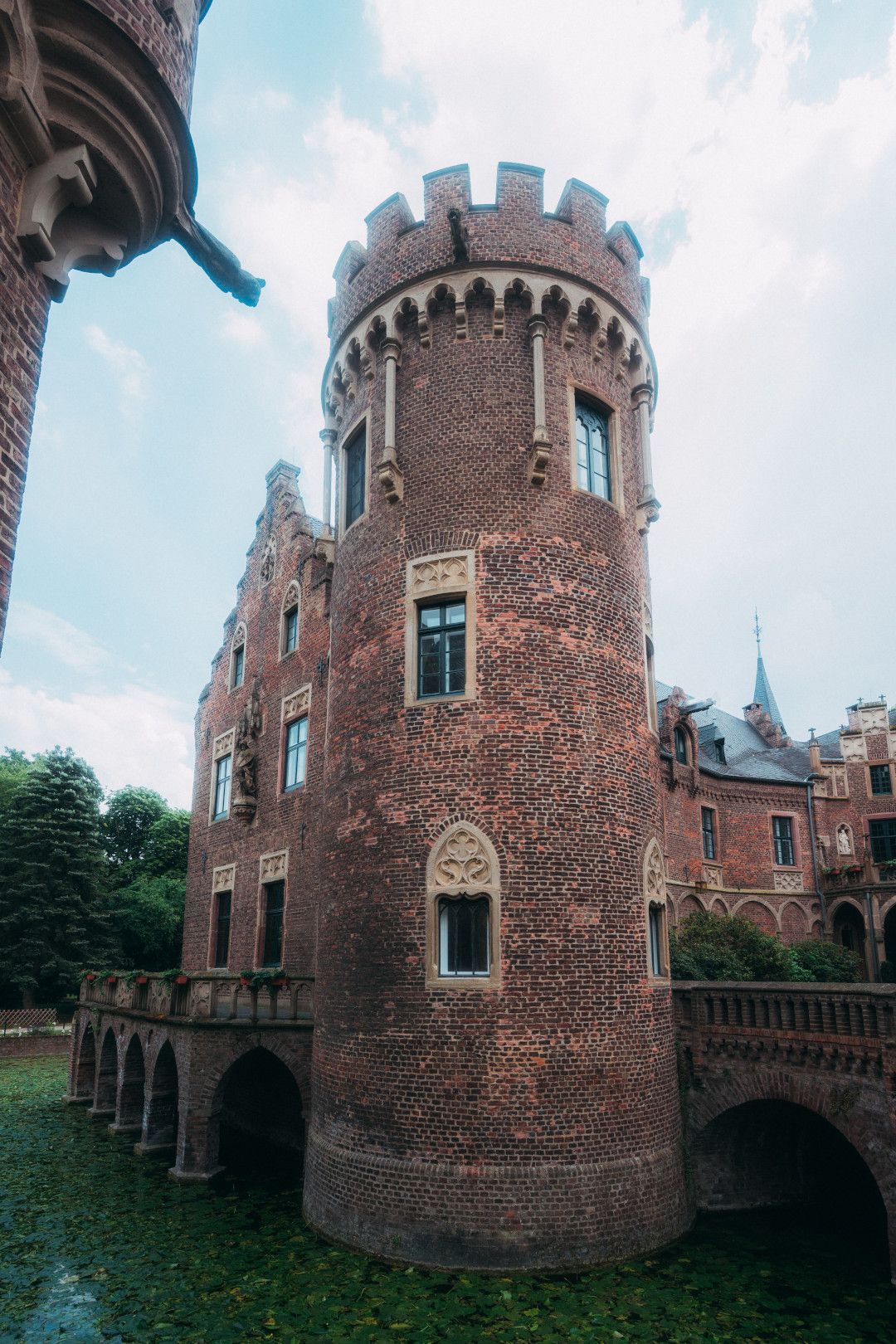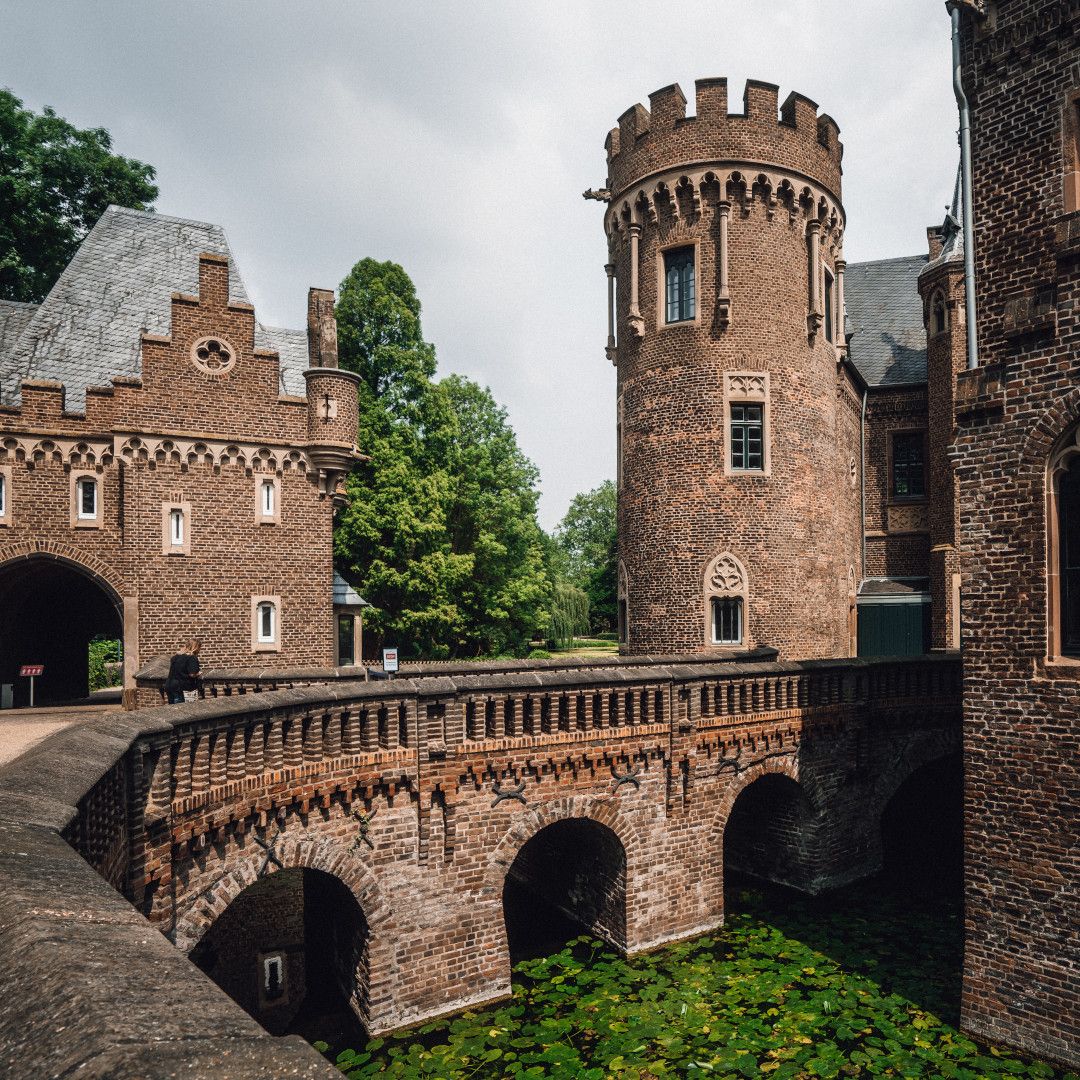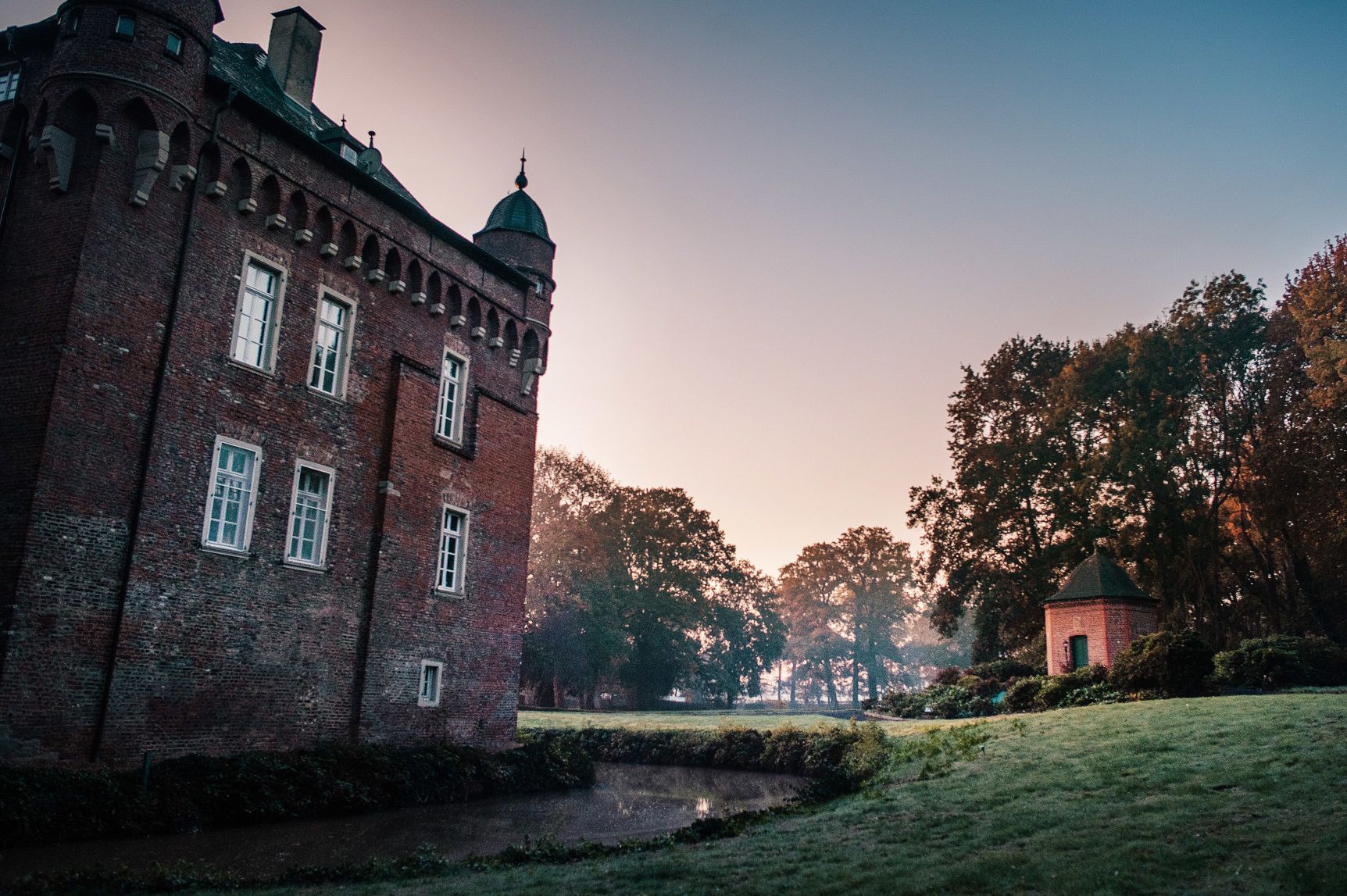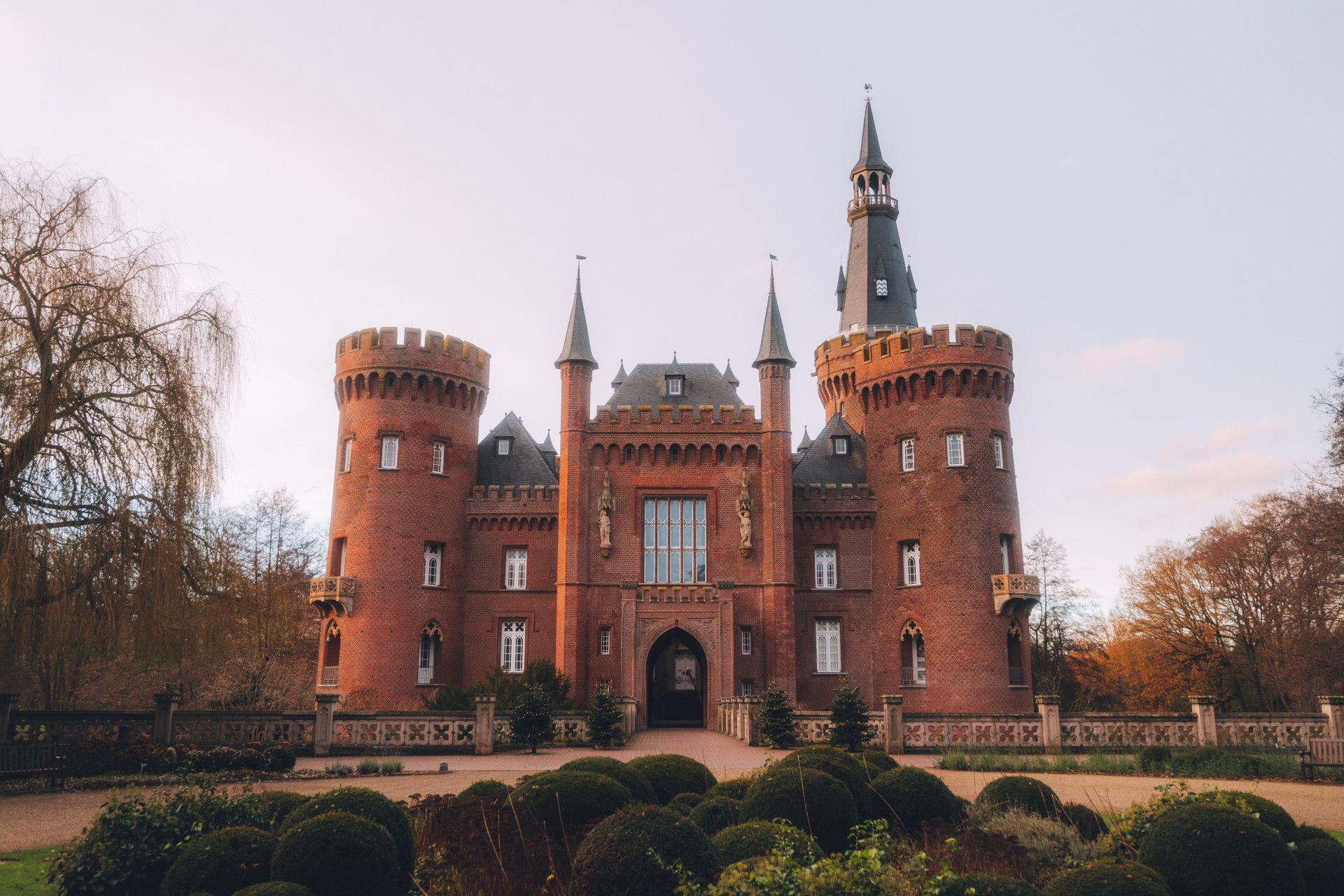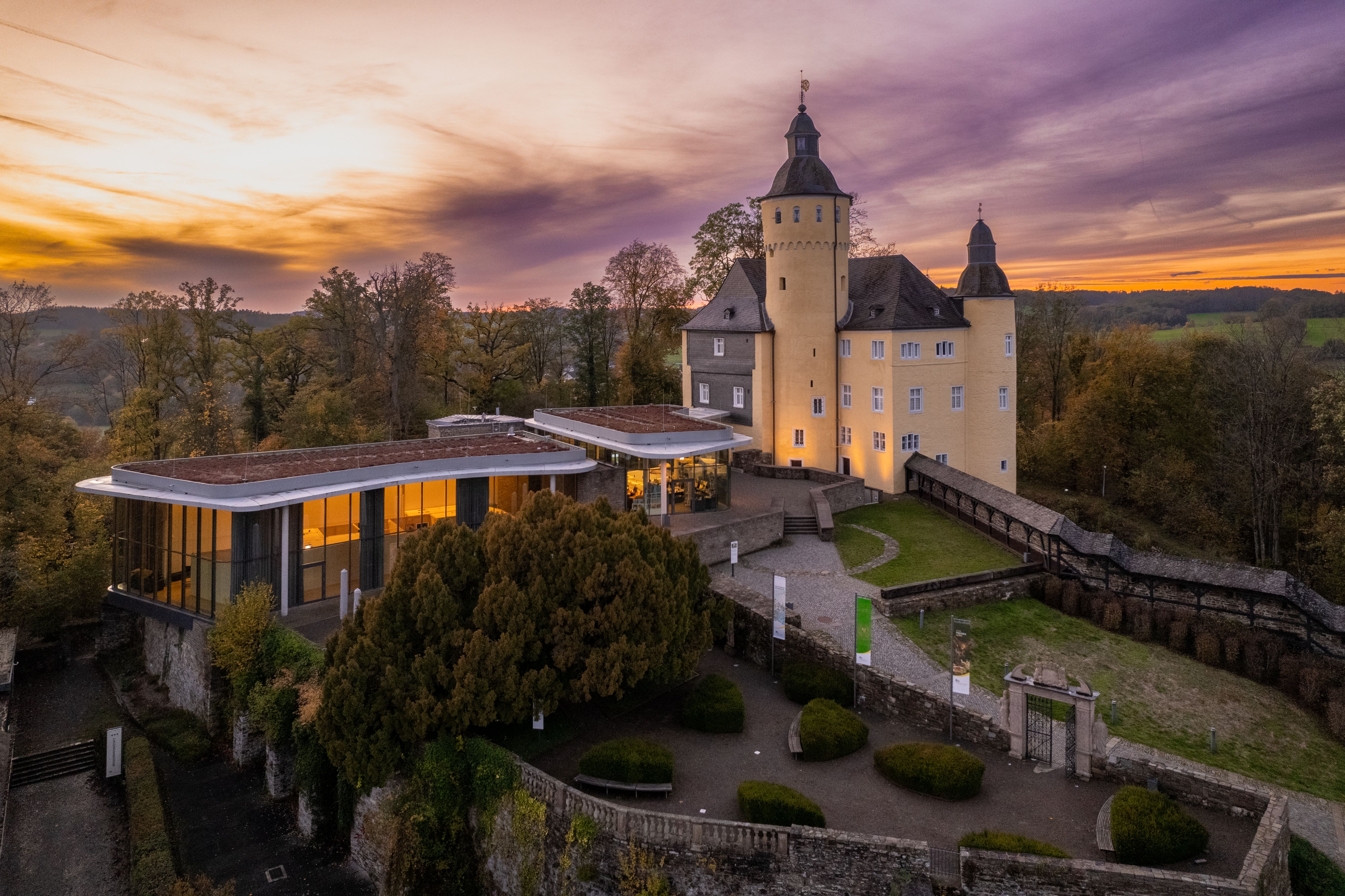Forest and moats, natural diversity and sustainability: these two gems, surrounded by ancient trees in the Rhine-Erft district, are linked by an eventful history that tells of defiance against open-cast mining and is full of hope for the future. Türnich Castle in Kerpen and Paffendorf Castle in Bergheim have retained their romantic charm in their historically evolved parks and combine this with ecological values and aspirations.
Visitors can meet the owner of Türnich Castle himself either in the courtyard café or while farming in the castle gardens. Just over a decade ago, Count Severin von Hoensbroech took over his ancestors' listed castle, which had been partially destroyed by the earth movements of the nearby open-cast mine, in order to secure and renovate it and transform it into a place for the future. Natural, sustainable and close to the people. Among other things, he had the 15-hectare, publicly accessible forest park around the baroque moated castle restored according to historical plans and ecological findings. Fruit, vegetables and arable crops grow in the fields between the kilometre-long curved hedges. You can even try and buy them in the café and farm shop in the castle courtyard.
